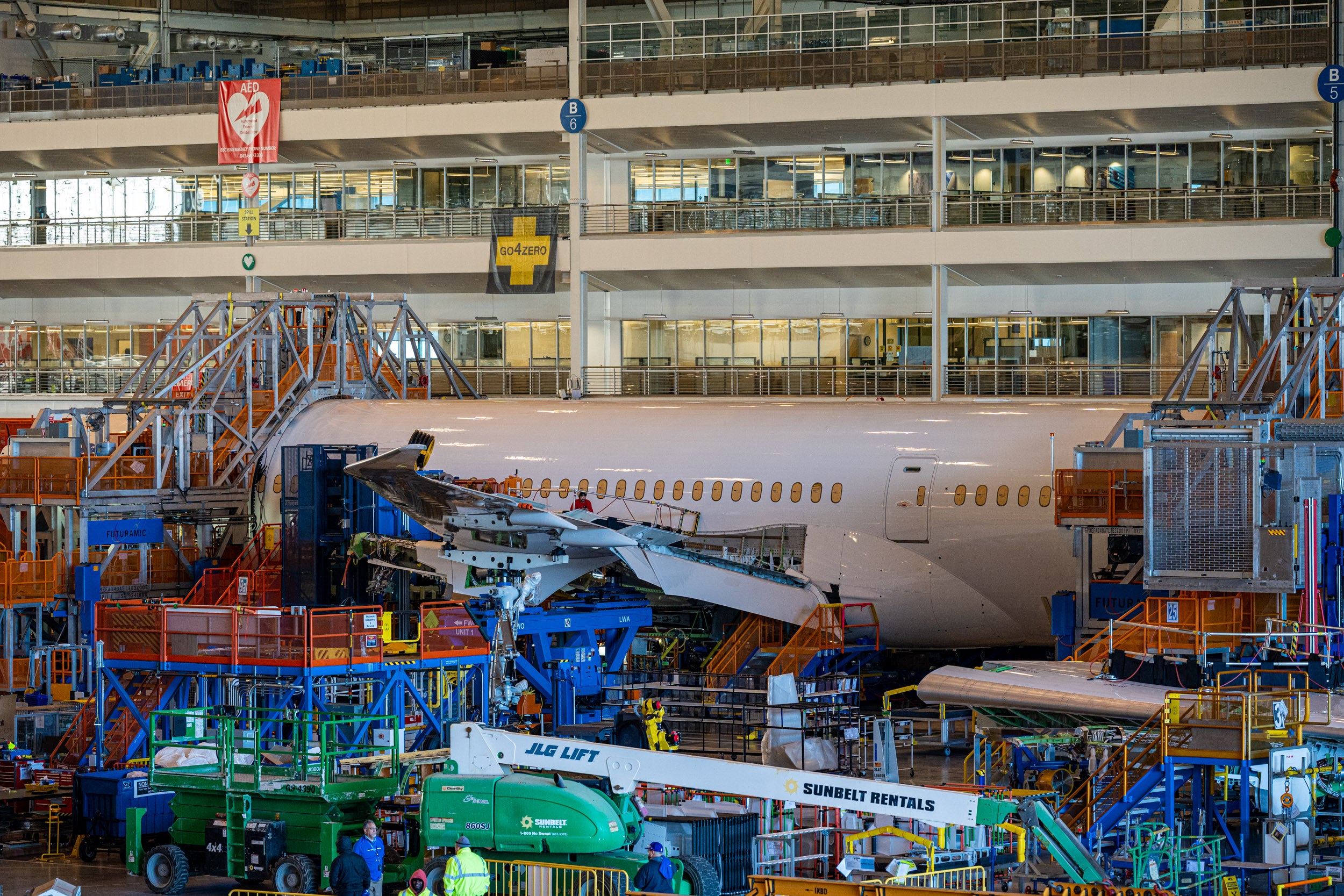Boeing safety culture in the spotlight at dual Senate hearings amid whistleblower report
Boeing was back in the spotlight on Wednesday as the subject of two Senate hearings focused on alleged safety lapses at the plane-maker.
The first hearing before the U.S. Senate Committee on Commerce, Science and Transportation centered around a report issued in February by a panel of industry and government experts that a “disconnect” between management and workers contributes to a poor safety culture — and makes it harder for employees to raise issues.
Want more aviation news? Sign up for TPG’s free biweekly Aviation newsletter.
The panel was commissioned in the aftermath of two fatal Boeing 737 MAX crashes in 2018 and 2019 that killed a combined 346 people. Both crashes were linked to a design flaw in the aircraft. The panel was particularly focused on a program called organization designation authorization, under which the Federal Aviation Administration delegated some responsibilities for inspecting and signing off on aspects of new aircraft to Boeing employees.
That panel’s report was published amid a renewed focus on Boeing following a January incident that caused an unsecured piece of fuselage to fall from an Alaska Airlines plane during a flight. No one was injured in the episode.
Related: What to know about the Boeing 737 MAX 9 and the MAX series
Although the Alaska Airlines incident was not a part of the panel’s report, it, and a renewed focus on safety in air travel among the broader public, elevated the visibility of the report and Wednesday’s hearing.
“Flying commercial remains the safest way to travel,” said Sen. Ted Cruz, a Republican from Texas and the ranking member of the committee. “But understandably, recent incidents have left the flying public worried. The perception is things are getting worse.”
The second hearing featured testimony from Sam Salehpour, a Boeing employee and whistleblower who last week accused the company of taking manufacturing shortcuts on its 787 and 777 production lines, which he alleged introduced potential structural flaws to both wide-body plane types.

Daily Newsletter
Reward your inbox with the TPG Daily newsletter
Join over 700,000 readers for breaking news, in-depth guides and exclusive deals from TPG’s experts
Salehpour claimed that Boeing used excessive force to join separate parts of the 787 fuselage and failed to “shim” the parts, a process that added filler material to small gaps to reduce movement. That movement can cause more stress and fatigue on the composite material used to make the fuselage, he said.
On the 777, Salehpour alleged that fuselage panels that did not fit properly were delivered from a vendor and said that factory workers jumped on pieces of the fuselage to jam them into place, potentially deforming them. He claimed that he was moved to the 777 program as retaliation after raising concerns about the 787.
Related: Boeing defends wide-body manufacturing following whistleblower report
During the hearing, Salehpour claimed that Boeing was putting the public at risk and alleged that he’s been subject to harassment and retribution from Boeing as a result of his raising concerns.
“I do not want to see a 787 or 777 crash,” Salehpour said, “and I’m willing to take on professional risks to talk about them.”
“Effectively, they are putting out defective airplanes,” he added.
Sen. Richard Blumenthal, a Democrat from Connecticut and chairperson of the subcommittee of the U.S. Senate Homeland Security and Governmental Affairs Committee that held the hearing, said that he planned to hold additional hearings.
“Our goal is not to drive Boeing to fail, in fact, just the opposite. We want and need Boeing to succeed,” he said. “We want Boeing to learn from its mistakes and be accountable.”
Boeing has staunchly defended the Dreamliner manufacturing process and the 777 program in the week since Salehpour’s claims were made public, using a notably different tact and tone than the conciliatory one it has adopted surrounding the narrow-body 737 issues.
Earlier this week, the company held an unusual media briefing from its Dreamliner assembly plant in North Charleston, South Carolina, where it detailed the specifics of how it assembles the 787 from several parts that are built and delivered disassembled, such as the fuselage, wings and tail section, and the structural testing each component undergoes.
No Boeing representatives testified at either hearing on Wednesday. The company reiterated its defense of the wide-body programs in emailed statements and said it was implementing recommendations made by the safety panel.
“Since 2020, Boeing has taken important steps to foster a safety culture that empowers and encourages all employees to raise their voice,” Boeing said in a statement. “We know we have more work to do and we are taking action across our company.”
“Retaliation is strictly prohibited at Boeing,” the statement added.
Boeing said that it had seen a 500% increase in volume through an internal reporting system for employees to raise issues since January, following “quality stand downs” the company held following the Alaska Airlines accident.

